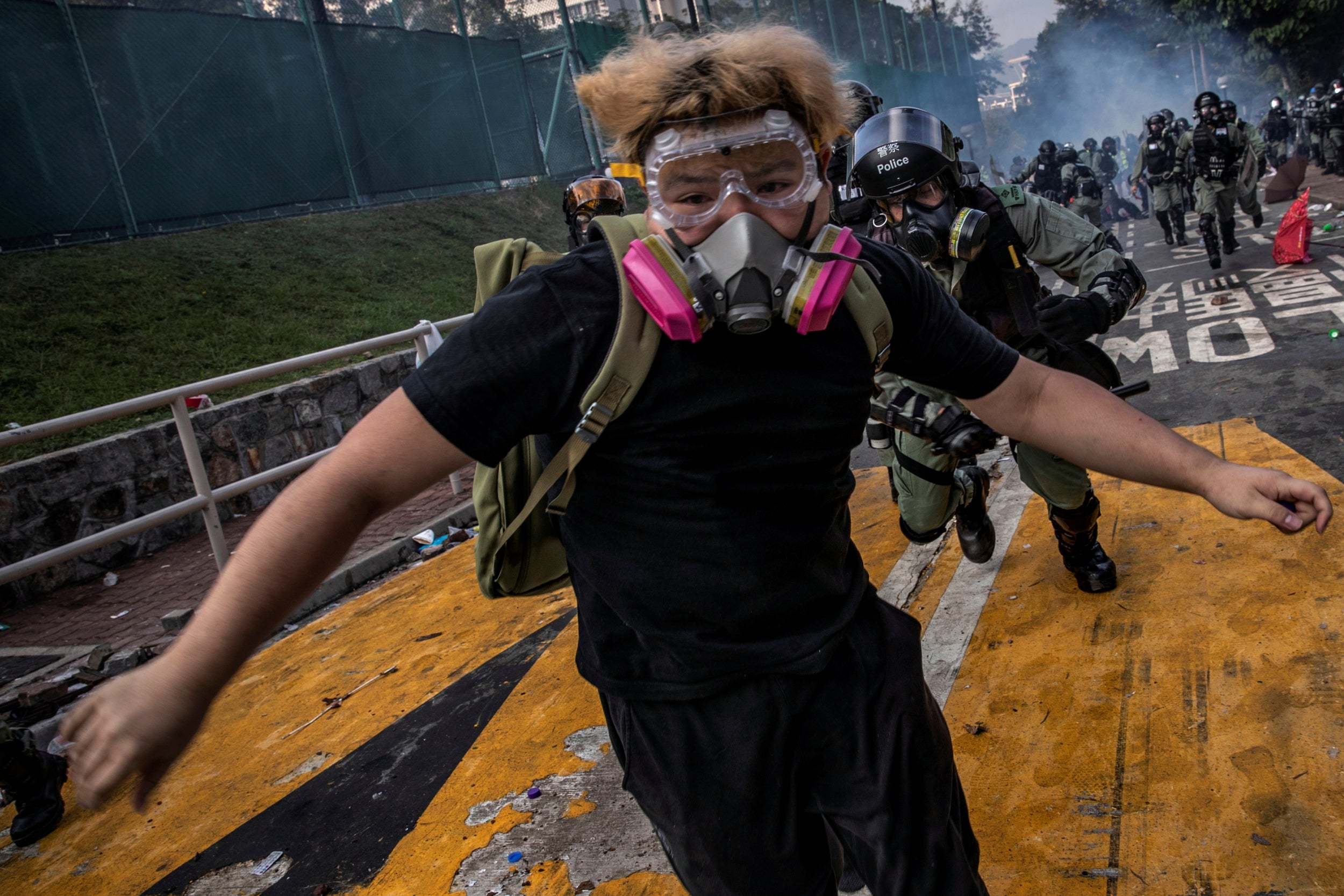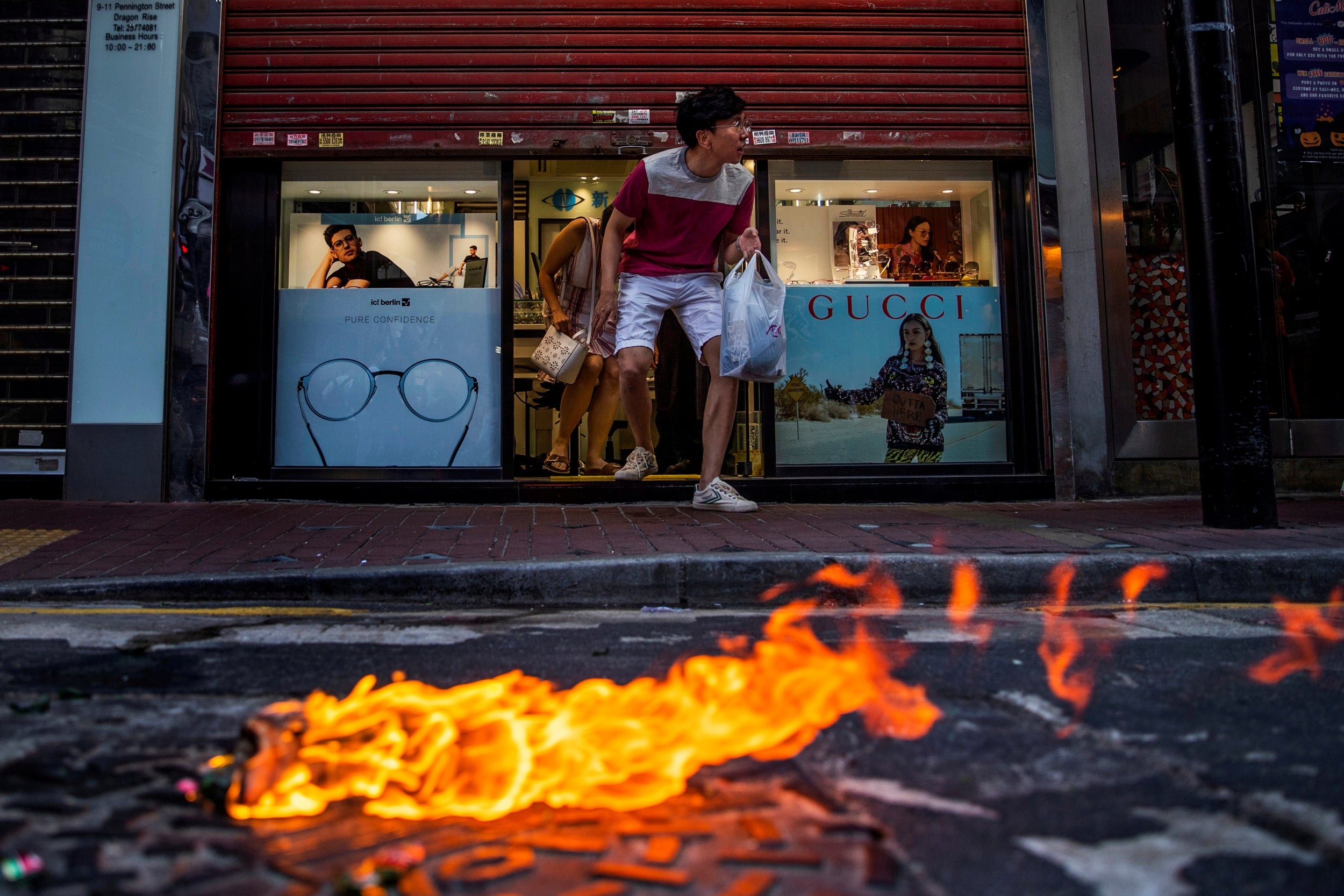Pulitzer-winning photographers look back on Hong Kong’s protests
Harrowing images taken by the Reuters photography team capture a tumultuous and incendiary moment in history
Your support helps us to tell the story
From reproductive rights to climate change to Big Tech, The Independent is on the ground when the story is developing. Whether it's investigating the financials of Elon Musk's pro-Trump PAC or producing our latest documentary, 'The A Word', which shines a light on the American women fighting for reproductive rights, we know how important it is to parse out the facts from the messaging.
At such a critical moment in US history, we need reporters on the ground. Your donation allows us to keep sending journalists to speak to both sides of the story.
The Independent is trusted by Americans across the entire political spectrum. And unlike many other quality news outlets, we choose not to lock Americans out of our reporting and analysis with paywalls. We believe quality journalism should be available to everyone, paid for by those who can afford it.
Your support makes all the difference.The young woman is pressed to the ground next to a riot police shield. Detained by Hong Kong authorities, she screams her name out to friends so they can call a lawyer to help.
The picture, taken on 2 September last year in the midst of huge and violent protests that rocked Hong Kong for more than six months, is part of a series of images by a team of Reuters photographers that won a Pulitzer Prize for breaking news photography.
The photographs range from sweeping bird’s eye views of boulevards packed with tens of thousands of demonstrators to close-ups of pitched battles between anti-China protesters and police seeking to restore order.
Most of the violence took place at night, lending an eerie aura to the action – protesters stood out as silhouettes against teargas smoke; giant neon letters reading “FREE HK” and carried aloft by protesters glowed in the gloom from a hilltop.
For Tyrone Siu, a Reuters photographer who is from Hong Kong, covering the story was intensely personal. A graduate of the Chinese University of Hong Kong, scene of some of the fiercest clashes between police and protesters, he saw his alma mater turned into a battleground. The city sports stadium became a giant shelter for injured protesters.
“At the same time, I must remain calm amid the intense atmosphere in order to carry out my duty as a photojournalist, helping foreign colleagues to get about and handling the fast-changing situation,” he recalls.
Siu took the picture of the shouting woman and, despite spending months on the streets of a city that resembled a war zone at times, it sticks in his memory. “The emotions shown on her face were so strong and striking that it left a lasting memory,” he says. “But it was only one day of many days, one face of many young faces being detained by the police in this manner throughout the months-long protest.”

The Pulitzer Prize for Reuters was the newsroom’s eighth since 2008, and fifth in the last three years. Reuters coverage of the Hong Kong uprising was also a Pulitzer finalist in the international reporting category. Many of the winning photographs depicted violent clashes between Hong Kong protesters and authorities, including images taken in the midst of skirmishes with tear gas, rubber bullets and hurled bricks.
Ahmad Masood, Asia Editor for Reuters Pictures who oversaw the coverage, says he and others began to prioritise the Hong Kong story in June, when big rallies were announced. As mass protests turned violent and time passed, the protest movement began to fracture, making it harder to plan. “This is where Tyrone’s local knowledge and network of contacts kept the team informed of what the next development was likely to be,” says Masood.
“There was a lot of chasing around. Sometimes there were four photographers at different spots across the city with some serious clashes going on during daylight and night.”
In some pictures, civilians are caught up in the chaos – passengers outside an airport running with their luggage or a man crouching as he leaves an optician store, the flames of a molotov cocktail licking the street in front of him. In others, police clash with demonstrators, many of them students wearing gas masks and helmets.

There are moments of brutality. A photograph taken by Thomas Peter shows a masked anti-government protester attacking a man who is suspected of being a pro-Beijing activist with a hammer. Blood pours from the victim’s head.
Rickey Rogers, Global Editor for Reuters Pictures, says the prize was a testament to the teamwork that went into covering a protracted and often dangerous story. “Eleven photographers have their names inscribed in journalistic history, but there were 28 Reuters photographers who rotated through Hong Kong during 2019, plus security and legal advisers, and a team of editors.
“All of them were critical in what truly matters beyond any prize – telling the news story to the world.”
Reuters
Join our commenting forum
Join thought-provoking conversations, follow other Independent readers and see their replies
Comments